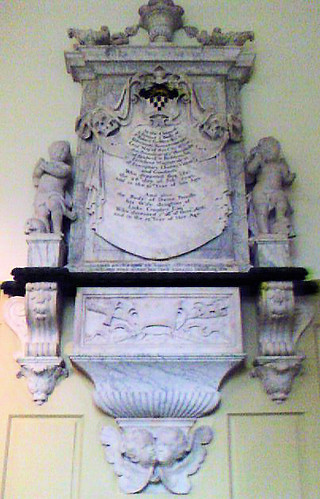Last week I finally managed to get back to the Institute for Historical Research, for a seminar on the status of medieval Jewish women, by Dr Simha Goldin from Tel Aviv. It focused on the case of Sarah, a wife in 13th-century Germany who gave birth 12 months after her husband, Isaac, had gone away for work. (Apparently quite common at the time – there were religious rulings saying that the man should not be away more than a year and half, and should prove he had no dispute with his wife before he left. He should also leave enough money for the family’s subsistence, including the education of boys and girls. When returned had to stay for at least six months.)
Dr Goldin said that from the 11th to 14th centuries there were huge changes in the status of women in the Jewish community. Prior to that polygamy had been widely accepted, but by the end of the 11th century in Germany, Northern France and England absolute monogamy was established and wives could not be divorced against their will. Brides got a marriage settlement and agreements about how she would be treated. About only way this status and rights could be lost was by proof of adultery. Much is known about these communities due to responsa – letters seeking advice on matters of Jewish law and everyday life which were circulated to and among spiritual leaders
But back to Sarah; Isaac tried to divorce her and to overrule her marriage contract. The local rabbinical court refused to meet, however, probably because of the gravity of problem – the child would be bastard, she would be divorced without compensation (probably meaning the community would have to support her.
The case was refered to the Maharam of Rotterdam, a highly respected scholar. His response is remarkable its liberality combined with legal nitpicking. He quotes a Talmudic principle that birth can be delayed up to three months, also says that key witnesses all from one family only count as one and says that to prove adultery the husband must have warned her about her conduct, and had two witnesses to catch her in flagrante. Finally rules only if she could give a good reason for denying pregnancy (when she should have been pregnant with a 12-month pregnancy) should she be exonerated. But still full conditions for finding adultery not met, so says husband can divorce her against will but must give her a settlement so she won’t be left destitute.
Then we got to what I found the really interesting question: Why the improvement in the status of Jewish women at this time? Dr Goldin attributed this to tension from outside on community that brought new solidarity and improvements in attitude towards women and children. The more positive approach started after the First Crusade. (After the 14th century conditions for women start to get worse again. )
So I asked why it was that this community had liberalized its approach to women when so many other communities (and there are of course many modern examples) have increasingly policed and repressed their women in similar circumstances. One suggestion was that they were trying to prevent the women converting to Christianity. Indeed Sarah (and the father of her baby was allegedly a gentile), when her father had tried to control her, he reported that she had threatened to convert. She had run away from home several times but had been persuaded to return by her mother.
Lest, however, you should think this some sort of freedom, it should be noted the Responsa says that her father had asked the court earlier for “permission to drown herâ€!!! because of her uncontrollability. Although at least they said no.


 About
About